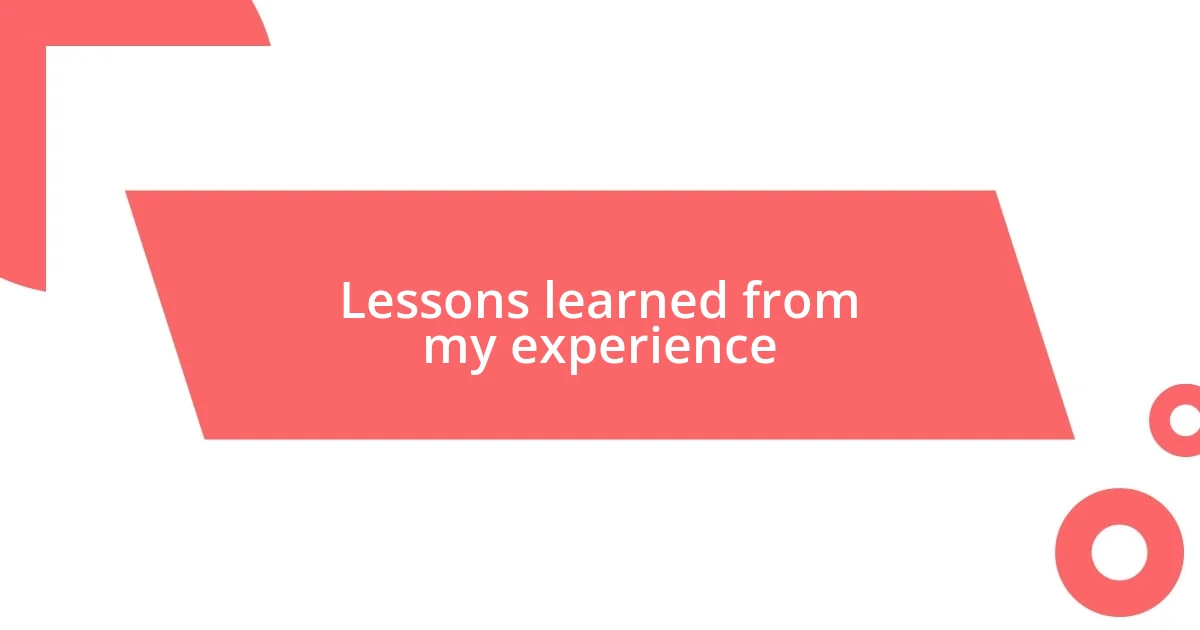Key takeaways:
- Streaming analytics enables real-time data processing, enhancing decision-making and understanding of customer behavior.
- Effective data analysis focuses on actionable insights, allowing for immediate responses to emerging trends and potential crises.
- Lessons learned from streaming analytics include the importance of resilience, collaboration across teams, and the need for balanced reactions to data fluctuations.

Introduction to streaming analytics
Streaming analytics is a game-changing technology that processes data in real-time, allowing businesses to make swift decisions based on the insights gathered from continuous data streams. I remember the first time I witnessed its power at a tech conference, where companies showcased how they could track customer sentiments live during product launches. It sparked a curiosity in me about how companies today rely on instantaneous data.
Imagine receiving live updates about user interactions while you’re still brainstorming ideas. This immediacy not only enhances decision-making but also transforms how we understand customer behavior and market trends as they unfold. I often find myself marveling at how businesses can pivot strategies on the fly, driven by fresh insights from streaming analytics.
The beauty of this approach lies in its ability to detect patterns and anomalies in vast amounts of data almost instantly. As I dove deeper into this field, I was fascinated to learn how even small changes in customer engagement metrics can have an immediate impact on overall strategy. Doesn’t it make you wonder what new opportunities and challenges streaming analytics can unveil for your own endeavors?

Analyzing data effectively
Effective data analysis is all about making sense of the noise in real time. I recall the moments when I sat in front of a streaming dashboard, the numbers flickering like a light show. Each uptick and downtick told a story—were people responding well to a campaign or was there an unforeseen glitch? These insights don’t just inform strategies; they shape the very direction of a project, providing clarity amid the chaos.
Another day, as I monitored social media interactions during a live event, I noticed a sudden spike in negative comments. It triggered an immediate reaction from the team, allowing us to engage and address concerns before they spiraled out of control. The ability to quickly analyze these reactions made me realize how vital timely insights are to preserving a brand’s reputation and enhancing customer relations. Isn’t that an exhilarating thought—having the power to turn potential crises into opportunities with just a bit of real-time analysis?
When analyzing data effectively, it’s crucial to distinguish between actionable insights and mere data points. I often emphasize this with my colleagues: it’s not just about collecting data, but actively interpreting it to inform decisions. I’ll never forget the rush I felt when, after analyzing streaming data, we uncovered a trend that led to an unexpected successful product feature. It’s moments like these that highlight the transformative power of effective data analysis.
| Aspect | Description |
|---|---|
| Real-Time Capabilities | Close tracking of data streams provides immediate insights. |
| Pattern Recognition | Allows quick identification of trends or anomalies. |
| Agility in Decision-Making | Facilitates swift adjustments based on current data. |

Lessons learned from my experience
Navigating the world of streaming analytics taught me that resilience is key. I vividly remember a project where we aimed to optimize customer engagement in real time. However, during our first major rollout, we encountered a significant data lag. It was frustrating, but it also pushed us to iterate on our approach quickly. This experience solidified my belief that being adaptable is essential for leveraging real-time data effectively. Have you ever faced a setback that ultimately helped you grow?
Another lesson I learned is the importance of collaboration. Early on, I worked closely with both the marketing and IT teams. I was surprised to find how different perspectives enriched our analysis. For instance, while analyzing data trends, the marketing team suggested ways to engage with customers based on the insights, which led to a successful campaign tweak that drove more traffic than we anticipated. It made me realize that diverse inputs can transform disparate data into a cohesive strategy. Isn’t it amazing how teamwork can turn numbers into narratives?
Lastly, I’ve come to appreciate the balance between action and overreaction. There were times when a slight drop in engagement figures sent us into a frenzy, leading to hasty decisions we later regretted. I learned to take a step back and assess the broader context before reacting impulsively. By doing so, I discovered that allowing time for analysis could reveal deeper insights and ultimately lead to far more strategic responses. Have you found yourself in a similar situation, where thoughtful reflection paved the way for more meaningful action?















